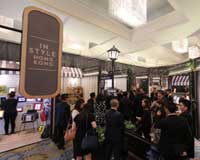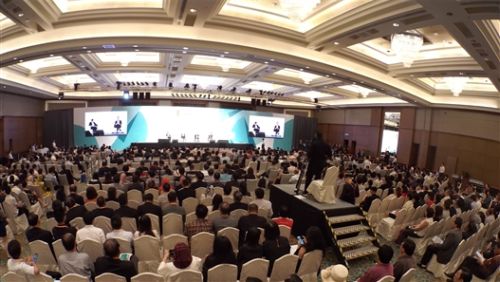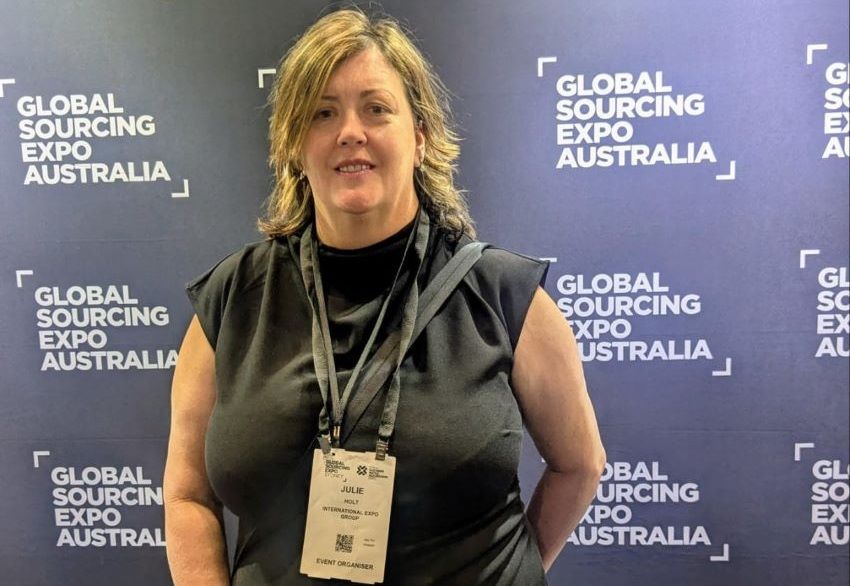FW
Made in Pakistan is being held November 10 to 12. Organized by Fashion Pakistan in partnership with the Trade and Development Authority of Pakistan (TDAP), this is a platform for Pakistani fashion designers to showcase their creations.
It is being held as a stepping stone for eminent designers who will be linked with the industry to produce collections for the export market. Besides providing them solid experience and mentoring, and a chance for their work and talent to be recognised, the aim is to encourage production of value added products.
The ultimate aim is to make the country’s fashion industry competitive in international markets by building on relationships with buyers, both overseas and domestic, and establishing and strengthening ties with international businesses. Made In Pakistan will showcase collections by: Amir Adnan, Aamna Aqeel, Fnk Asia, Nova Leather, Hassan Riaz, Tena Durrani, Deepak Perwani, Jafferjees X Wardha Saleem, Zuria Dor, Rizwanullah, Adnan Pardesy, Nauman Arfeen, The Pink Tree Company and Gulabo by Maheen Khan.
This year, Fashion Pakistan will be launching 10 emerging designers. TDAP, established in 2006, is the successor organisation to the Export Promotion Bureau and is mandated to have a holistic view of global trade development rather than only the export promotion perspective of its predecessor.
Elgi Equipments has joined hands with Indian Texpreneurs Federation (ITF) and designed a comprehensive program on air audit. The program includes information session for owners and managers on the best compressed air practices, practical training sessions for maintenance engineers and air audit programs that help recognise cost savings.
Energy conservation has become a focus for textile mills given the rising energy cost. The most expensive component in the total cost of compressed air is energy. Elgi is a Coimbatore-based air compressor manufacturing major. It is committed to 500 air-alert equipped machines by the end of this calendar year.
Under the Elgi-ITF program, air audits were conducted across 130 textile mills in the south over the past 12 months. The annual savings worked out to Rs 14 crores with an average compressed air energy cost reduction of 43 per cent.
Air audit is a review of use of compressed air, taking into account their generation and distribution. While review of generation is a comparison of energy consumption, current condition and application to original specification, distribution is evaluating the use of compressed air in the plant, which could include leak in the air lines and general consumption.
Elgi will look at such partnerships with machinery manufacturers across different sectors such as pharmaceuticals and automobiles.
China Hosiery Purchasing Expo (CHPE) will be held from March 26 to 28, at Shanghai World Expo Exhibition & Convention Center (SWEECC). The event will segment the exhibition sections by markets and set up specialty product zones for targeted promotion. It will witness more than 500 exhibitors from Turkey, Pakistan, Korea and Japan. The exhibitors will bring in various hosiery brands to the expo and present the latest global fashion of the hosiery products.
The expo serves global hosiery enterprises by building an efficient trading platform for exhibitors and purchasers and it is widely recognized in the hosiery industry. CHPE will showcase the complete manufacturing chain from yarns, finished socks/hosiery products, hosiery machines to packaging machines. It will also hold special exhibitions of a wider range of textile products such as hats, scarves and gloves as well as the augmented products of the hosiery industry in response to the needs of professional purchasers.
The expo is an international medium to showcase innovative and luxurious products and services to the Chinese market. It aims to meet qualified buyers, understand market demand, establish strong and solid business partnerships and find new business partners. It combines exhibitions, seminars, conferences, new product releases and designer networking under one roof to provide a complete cost-effective marketing platform.
British luxury brand Burberry plans to turn more exclusive. The plan appears to be an attempt to reinvent Burberry as a super-luxe brand, like Hermes and Dior, which have higher prices and margins than Burberry. Currently, Burberry handbags start at about thousand pounds while Hermes starts at three times that price.
It’s a textbook luxury brand re-positioning exercise, which should leave Burberry jostling against the world’s most exclusive names, with the margins to match. Burberry will be taken out of all but the most exclusive stores, starting in the US wholesale channel. Like-to- like retail sales were up four per cent in the six months to September, with the UK growing in double digits. Pre-tax profits also came in ahead of expectations. Overall revenues rose nine per cent. Rain-wear has boosted sales in the past six months, with the car coat and the tropical gabardine particularly popular.
China posted mid teens sales growth while Japan and Hong Kong returned to growth, boosted by Chinese tourists. True luxury brands command immense pricing power and generate fabulous margins and cash flows. They sell to wealthy consumers and just like their customers are more resistant to downturns.
"The Hong Kong Trade Development Council’s (HKTDC) mega promotion event, ‘In Style Hong Kong’, is underway in Malaysian capital, Kuala Lumpur. Two of the campaign’s highlight events are: In Style Hong Kong Symposium and In Style Hong Kong Expo. Y B Datuk Seri Ir Dr Wee Ka Siong, Minister in Prime Minister’s Department, Malaysia; Rimsky Yuen, Secretary, Justice, Hong Kong SAR; and Vincent HS Lo, Chairman, HKTDC, each delivered speeches at the opening ceremony."

The Hong Kong Trade Development Council’s (HKTDC) mega promotion event, ‘In Style Hong Kong’, is underway in Malaysian capital, Kuala Lumpur. Two of the campaign’s highlight events are: In Style Hong Kong Symposium and In Style Hong Kong Expo. Y B Datuk Seri Ir Dr Wee Ka Siong, Minister in Prime Minister’s Department, Malaysia; Rimsky Yuen, Secretary, Justice, Hong Kong SAR; and Vincent HS Lo, Chairman, HKTDC, each delivered speeches at the opening ceremony.
“The eagerly anticipated free trade agreement between Hong Kong and ASEAN will be signed soon,” said Lo. “The pact is a momentous one, as the world’s focus now falls on Asia to drive economic growth. Against this backdrop, the relationship between Malaysia and Hong Kong is taking on new significance.” He said China’s Belt and Road Initiative spans more than 60 countries, covering 30 per cent of the world’s GDP, presenting massive business opportunities for infrastructure investment, financial and trade integration, as well as social and cultural exchange. “A plan of this scale also needs us to work together. To mine the potential, Malaysian enterprises can work with Hong Kong, which offers unmatched advantages,” he said.
Trend-setting city

Rimsky Yuen, highlighting Hong Kong’s role as a trendsetting city in the region, he said he is confident ‘In Style Hong Kong’ will foster even closer and stronger links between Malaysia and Hong Kong. Building on the flourishing relationship between Malaysia and Hong Kong, the Hong Kong-ASEAN Free Trade Agreement and related investment agreement will be signed very soon. He went on to say “We are grateful to all the members of ASEAN, including Malaysia, for their contribution in attaining our shared goal. Not only will the free trade agreement provide an appropriate forum to further enhance the flows of trade and investment between Hong Kong and ASEAN, it will further strengthen Hong Kong’s role facilitating mainland China business to go global and overseas enterprises to enter the mega mainland market.”
YB Datuk Seri Ir Dr Wee Ka Siong, put the spotlight on FTA when he said “To further strengthen our relationship within ASEAN with Hong Kong, our government has agreed to ratify a free trade agreement and investment agreement between ASEAN and Hong Kong. Among other measures under this FTA, Malaysia will abolish import duties on certain trade goods and streamline our import regulations with those of the WTO.” He added the FTA will facilitate more effective and efficient trade links between the region and Hong Kong. This is significant for Malaysia, too, to take part in the ASEAN-Hong Kong trade, which generated $106.8 billion in total merchandise trade in 2016.
Showcasing advantages
This campaign seeks to promote Hong Kong’s multi-faceted advantages. Key events include a symposium on Hong Kong’s professional services, and the expo, which showcases products from Hong Kong’s leading brands. The symposium invited a number of Hong Kong and Malaysian business leaders and government officials to promote Hong Kong’s professional services. The speakers examined how Hong Kong’s service companies can help Malaysian companies expand their business. Five thematic sessions followed the main symposium, covering topics like e-commerce, Fintech, Smart City, Innovative Design and Marketing, and Legal Risk Management in International Trade.
The two-day expo was designed for buyers and representatives, from importers, distributors, retailers, brand agents, franchisees, department stores and specialty stores in Malaysia and neighbouring countries, to source stylish products created by Hong Kong companies. The expo featured 40 exhibitors showcasing Hong Kong brands in such sectors as home electronics, gifts and premium, fashion accessories and watches, and eco-friendly products. In addition, the Expo also displayed a range of award-winning products of the Hong Kong Smart Design Awards to showcase Hong Kong’s creative and design capabilities.
Portugal-based Tintex, caters to the athleisure and street sportswear markets. The company makes a sustainable range of precision, modern hybrid jersey fabrics. It has expertise in specialist dyeing and finishing techniques, coatings and applications designed with the latest equipments and processes. The collection called Naturally Advanced uses at least 60 per cent more sustainable materials such as Tencel, organic cotton, natural organic linen, and Ecotec by Marchi and Fildi, the smart cotton from pre-consumer scraps that saves water.
Now Tintex has made a range using GRS certified Roica premium stretch yarn, half of which comes from recycled pre-consumer waste. Other innovations include an extra fine jersey in 44 gauge using micro modal with an extra soft, water based coating for a translucent, sensual fashion tech product; luxurious base layers in extra fine gauges with improved breathable and thermo regulating performance, combined with moisture control, for the women’s wear luxury athleisure market; jerseys using BCI cotton, with a sensory touch and UV sensitive prints on an advanced water-based, formaldehyde and solvent-free coating for a sparkling reflective touch; new responsible blends that mix Tencel, recycled polyester and Roica Eco Smart family for extra high-tech multi performance benefits; and BCI cotton brushed fleece with a sophisticated iridescence.
Clothing companies in Zimbabwe are finding it difficult to import raw materials. Reason: banks failing to allocate foreign currency for imports. Companies have the orders, the capacity, and skills, but without raw materials, they cannot operate.
The industry needs an allocation of $4million of foreign currency a week to import the required raw materials that are not locally available. Most of its raw materials come from Asia, as that is the most competitive source of textile materials. As of now companies source what they can from the local textile industry and many companies rely on wholesalers who import fabrics for resale. The lead time when buying from Asia is long, and this needs financing, so many companies are struggling with this challenge and are unable to respond to the opportunities that exist in the market with the greater demand for locally made products.
Without fabrics, Zimbabwe can’t make garments, and since garments can’t be made, they are imported. So instead of importing only the raw materials and value adding them in Zimbabwe, the country ends up importing the finished product and paying another country for the value addition.
Vardhman Textiles’ consolidated revenue for Q2 registered a 1.9 per cent year on year increase. Ebitda for the quarter fell by 36.6 per cent year on year with a corresponding margin contraction of 789 bps. Ebitda margin for the quarter stood at 13 per cent. This marginal contraction was led by higher cost of material consumed as proportionate to sales.
Profit after tax for the quarter showed a year on year decline of 71 per cent. This was mainly on account of a sharp decline in other income from the corresponding quarter of last year.
Vardhman is among the biggest names in textiles in India, with one of the largest spinning and fabric capacities. This textile giant has rapidly modified its business strategies to carve its own niche regardless of the presence of several small- and medium-level players with the shortest lead times.
The company has been able to sustain its volume by adding new customers and shortening production lead times which was possible due to a big in-house production capacity from yarn to fabric.
The product basket is diversified. It is now not only in cotton but creates blends like cotton tencel stretch, cotton modal super stretch and difficult products like bi-stretch.
Surat has seen a 40 per cent drop in polyester production and over five lakh job losses. Surat is the polyester capital of India. After demonetisation, consumers and businesses drastically reduced their textile purchases and GST saw the tax rates for many textiles vastly increase. The lack of buyers and higher tax rates caused huge numbers of textile manufacturing workers to become unemployed and also slowed down production.
A year ago Surat produced 40 million meters of polyester a day, the figure now stands at only 25 million meters. Most migrant workers have returned to their home states. Factories that once ran for 24 hours a day only have two shifts daily now. The entire polyester value chain from yarns to garments is under pressure. The withdrawal of high-value banknotes put sudden brakes on the disposable income of consumers, with grave consequences.
Textiles have been almost erased from customers’ priority list. Shops which usually gear up for the forthcoming wedding season wear a dull look. Surat ushered in the polyester revolution in the country, offering saris and dress material at Rs 125. Surat boasts of 7,00,000 looms that make the grey fabric bought by 65,000 traders. The grey fabric would go to the 400 dyeing and processing houses and get routed to embroidery units for embellishments for the final garment.
Russia wants to increase exports of technical textile and nonwoven products. Companies are beefing up production capacity accordingly. For example, Leading Russian manufacturer Inmed is building a new facility that will be used for the needs of the technical textile, medical and chemical industries. Total production capacity of the new plant will be 1.5 million linear meters of membrane materials and 6, 00,000 innovative functional materials, based on nanofibres, per year.
Vtor-Com, a leading producer of technical textiles and nonwovens, will increase the production of nonwovens and fibers by 50 per cent. The company aims to increase the annual output of nonwoven needle-punched fabrics up to 18 million sq mts. In addition, the company plans to produce three million running meters of nonwoven fabrics a year and will expand the production of synthetic polyester fibers.
Consumption of technical textiles in Russia has significantly increased, mainly due to an increase in demand from the military, medicine and pharmaceutical industries. In addition, demand for Russian textile materials is also growing abroad. These include the EU, former Soviet countries, including the CIS states, China and the Asia Pacific region.
Russian producers are aiming for higher exports to Germany, where demand for innovative textile materials has been steadily growing since the beginning of the millennium.












